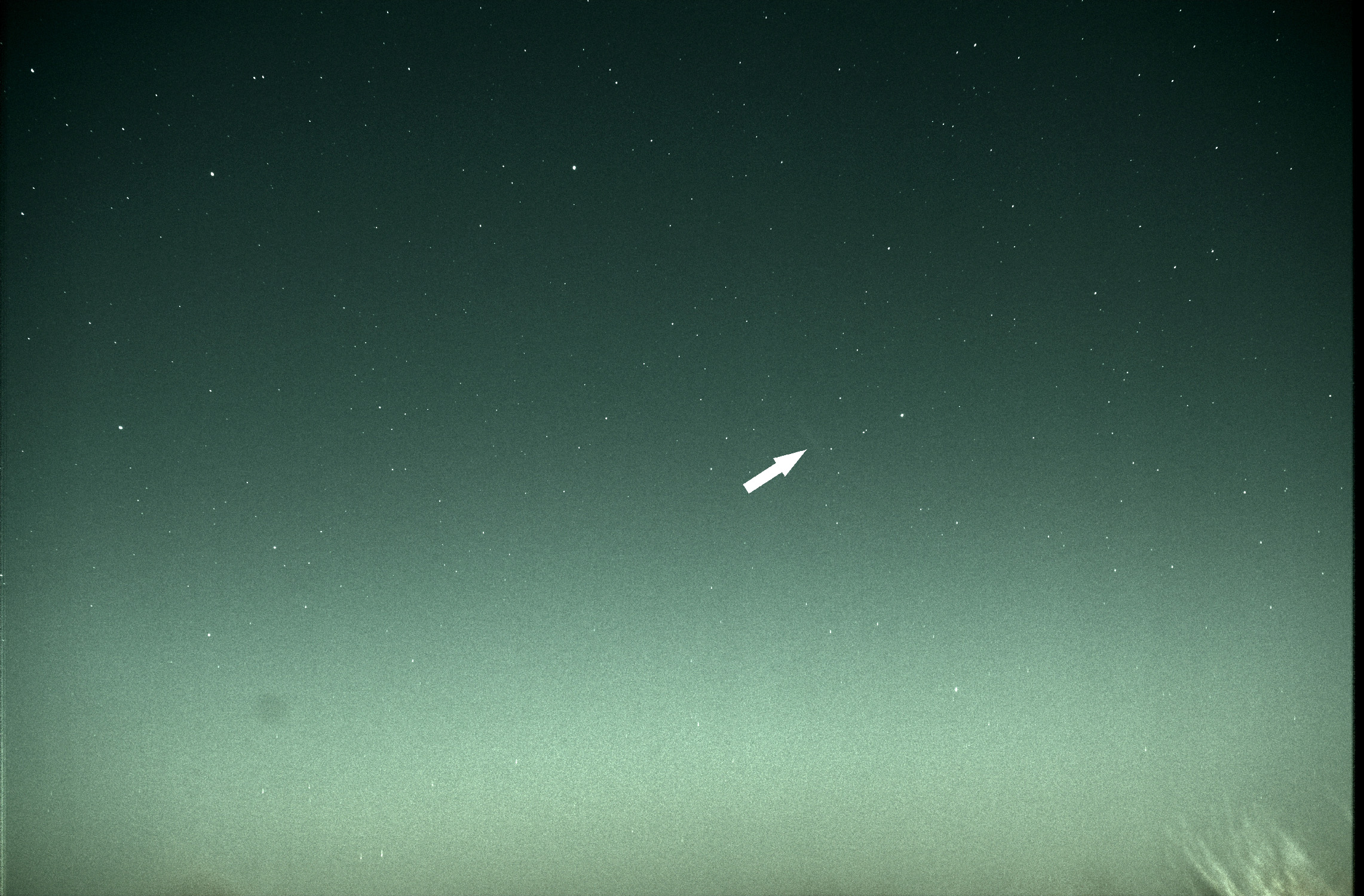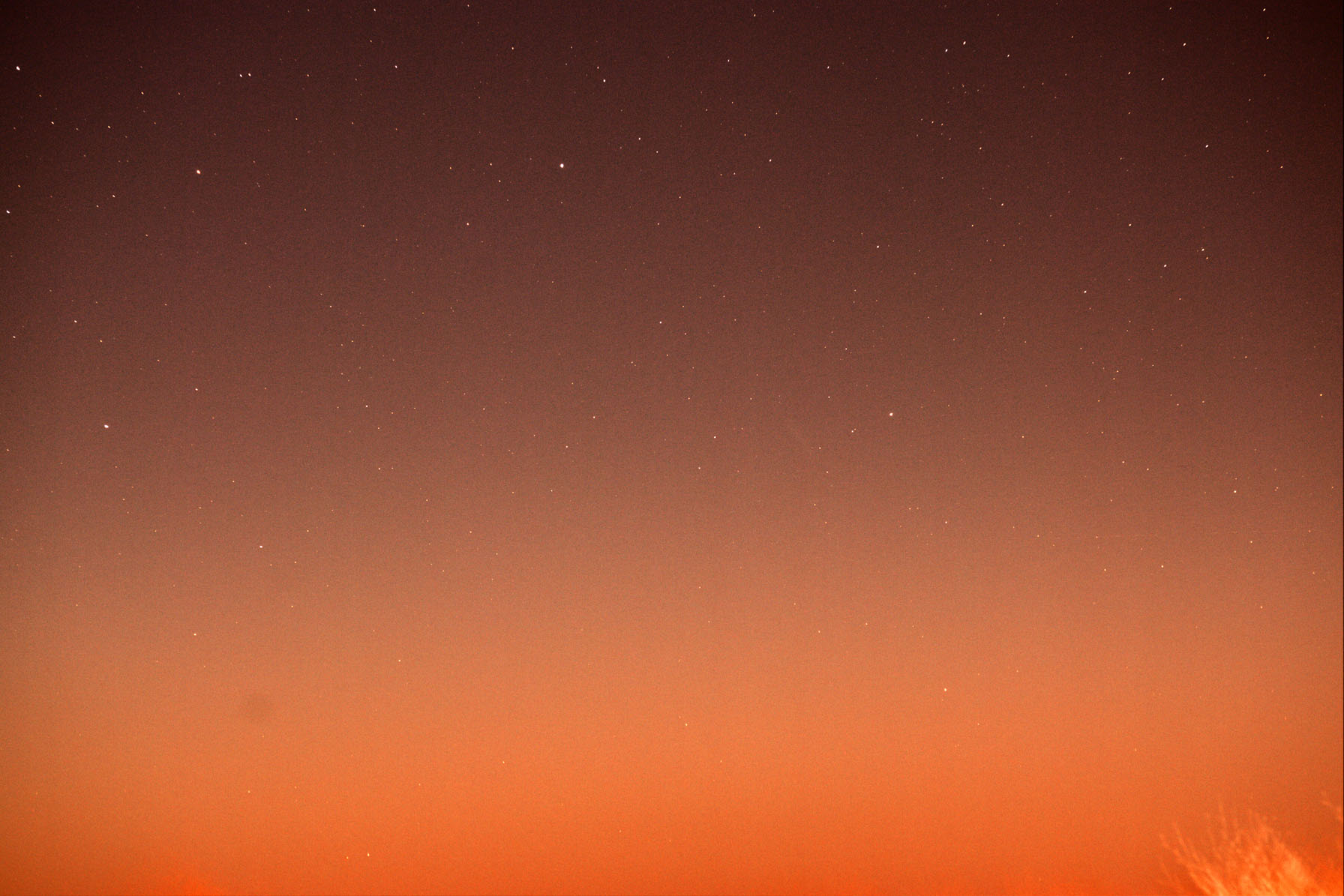Originally written - February 28, 2015; Edited - April 2020
What a wild last couple of days it’s been. Back on February 18th, the Solar and Heliospheric Observatory (SOHO) spacecraft saw a comet entering its field of view. This in itself is nothing unusual: the observatory had discovered 2874 comets already - a rate of one every few days since it became operational in late 1995. However, most of these comets are crumbs of ice and rock forming swarms confined to a handful of specific orbital paths. Many of these approach the Sun at distances of less than 3 million kilometers, which explains their origins: the cosmic rubble of larger comets that had broken up sometime during a past encounter with the Sun. These swarms are referred to as "comet families", and account for over 95% of the comets observed by SOHO. The vast majority of these comets vaporize entirely before they can start their outbound journey.
For the first part of its journey through SOHO's watchful eye, SOHO-2875 behaved no differently. It slowly brightened as it inched closer to the Sun, then fizzled dramatically as it made its closest approach. But SOHO-2875 was different. For one, it was not a member of a comet family, it flew solo. And, a few hours after closest approach, it suddenly returned to its previous brightness before starting to fade slowly. It even sprouted a small tail as it exited SOHO's field of view on February 22nd.
Things became interesting for an amateur astronomer like myself. Comets that survive trips this close to the Sun have the potential to become relatively bright. If not visible to the naked eye, then a pair of binoculars. Astronomers waited to pick it up as it rushed away from the Sun’s glare and into darker skies. Professional astronomers began searching with large telescopes on the night of February 23rd/24th. These searches came up empty handed, but established a limiting magnitude of ~9.5, a little fainter than can be seen in binoculars. Perhaps the comet hadn’t survived after all.
However, a few things encouraged me to search for the comet. First, I had read that the comet's predicted location hadn't been pinned down too well - perhaps astronomers had simply looked at the wrong place. Their telescopes would have a smaller field of view, so it would have been easy to miss if the predicted location was wrong. Second, the experiences of Comets Lovejoy (2011) and ISON (2013) were still fresh in my mind. Both had apparently survived their trips around the Sun, but both in diminished form. When Comet Lovejoy emerged into the night sky, it was a spectacular sight, but a close look showed that its nucleus had broken apart. It was little more than a very large cloud of debris. ISON fared worse; even as it left SOHO's field of view it was little more than a rapidly fading cloud. A few people managed to photograph it in Earth's night sky over the next few days, but it was a difficult task.
To my eye, SOHO-2875 (now officially christened C/2015 D1) appeared to split the difference. It was not as spectacularly bright as Comet Lovejoy, but it had clearly survived in better shape than Comet ISON. If it was only a cloud, I figured that my usual astrophotography setup (Nikon D5100 + star tracking mount) might do a better job of spotting it than a telescope. The wider field of view would let me search a wider area, and it would compress a cloud-like object into a small area, giving it a higher surface brightness. Both of these factors might give me a leg up on the search.
So around 6:30 CST on the evening of the 24th, I started packing my gear to go to an overlook that would give me a tree-free view of the western skies. I wondered if it was worth the effort, because the weather wasn’t looking great. The skies were nearly completely overcast, save for a small sliver of clear skies to the northwest. I decided to go for it, hoping that the clear sky would move in over the next few minutes. I was rewarded for the effort: by the time I arrived at the overlook there was a sizeable stretch of clear sky working in along the western horizon. The hunt was on!
As the skies darkened I started playing around with exposure lengths. There was a delicate balance I needed to achieve. If the exposure was too short, I wouldn't catch much light from the stars. Too long and I'd burn out the sky. I settled on an exposure length of 8”, aligned my startracker, and then started taking pictures to get my bearings. Using the review screen on the camera, I figured out which stars were visible, and then pattern matched them with a finder chart produced by Bob King. This was a relatively efficient process despite the blistering cold: within 10 minutes I had started my search. It was then 6:45 pm CST, about an hour after sunset.

The raw images weren't great (I could only ID stars down to about 6th magnitude, roughly the limits of human vision in dark skies), but I was hoping that a combination of image stacking and heavy post-processing would be capable of digging the fainter stars (and maybe even the comet!) out of the twilight. By 6:55 pm, the comet was getting too low to image. I could see the tops of trees starting to creep into view - any lower and I might start losing the signal during stacking! I needed to make a quick run to town to pick up goat feed for the family farm (the stores closed at 7:30 and it was a half hour away!), but the adrenaline for the search gave me a lead foot. I got the feed with a few minutes to spare, and then ran over to my dad's office in town to to do a quick and dirty processing on my laptop.
I knew time was of the essence - other people were looking and I wanted to be the first to see it. My attempt to go fast cost me some time, though - I didn't take the time to change previous settings I had used in Deep Sky Stacker, meaning I had to start the process all over. But when I finally managed to get a good stacked image at 8:15, my heart nearly stopped. To my surprise, without doing any processing at all, was a faint wisp of light near a star I had identified as Theta Piscis during my search. It was right where the comet should have been! I quickly stretched the contrast and uploaded the image to astrometry.net to double check my star IDs. It told me yes, I definitely had the right field.

The next step was nerve-wracking for me. I had a wisp of light right where the comet should be, but I started second-guessing myself. Could it be an artifact? The wisp was elongated, but it didn't the way it was streched didn't really match the comet's movement direction or the direction the tail should have been pointing. I started thinking it might be a lens flare from the lighting of a nearby house. But then I told myself, "it's way too big of a coincidence for that streak to be there". So I sat down and tweeted the picture to Karl Battams (@SungrazerComets), who specializes in SOHO comets and was following the search intently. I also provided the astrometry.net upload, figuring he might make heads or tails of it. I called it a night around 10pm without a response.
I slept pretty badly, wondering whether or not I'd done enough due diligence before reporting my find. (I realized a screw-up the next morning - Deep Sky Stacker tends to mess up the color balance of the pictures, giving everything a strong green cast. I had forgotten to fix it.)The last thing I wanted to do was embarrass myself by reporting a lens flare! I woke up to see a request from Karl regarding the estimated limiting magnitude of the image and the measured location. I'd forgotten to do both these critical things! But at least it seemed like it was being taken seriously. I looked up the area in the Millenium Star Atlas and found that I had imaged stars down to 11th magnitude (pretty good for moderately heavy twilight!), and then did some ruler astrometry. Karl felt those numbers checked out and tenatively linked the cloud to C/2015 D1. A few minutes later Spanish astronomer Jose Chambo asked me for some more detailed questions about image time and my location, then compared it to a planetarium image of the comet's predicted location. The cloud was dead on!

Despite the strong circumstantial evidence that this was indeed Comet SOHO, we waited for it to be confirmed with a second image to be sure. It turns out an amateur astronomer in Arkansas had also gotten a picture about 20 minutes after mine, but it went unnoticed at the time. I hoped that astronomers in Europe or Asia would be able to image it on the evening of the 25th, but no luck. I was clouded out on the evening of the 25th, so I couldn't perform a followup search. Finally, on the evening of the 26th, a large number of astronomers across Europe were able to get pictures of it. It looked nearly identical to what I had seen. The tension was off; I had definitely spotted the comet.
Of the nearly 2900 comets discovered by SOHO, only two had been sighted from the ground before C/2015 D1: a very bright long-period comet in 1998 that simply approached the inner Solar System from a direction that made it hard to spot from Earth, and a faint short-period comet in 2013. The remnants of Comet SOHO were bright enough that it was inevitable that someone would have seen them, but I’m proud to have been the first to snatch it out of the twilight. Unfortunately, I never saw Comet SOHO again. The next week had terrible weather, with wall-to-wall clouds. I suppose it was a small price to pay for the small window of opportunity that opened that night.